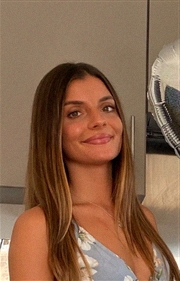Tutor HuntResources Biology Resources
What Is Protein Synthesis?
Explanation
Date : 17/11/2020
Author Information

Uploaded by : Sienna
Uploaded on : 17/11/2020
Subject : Biology
Protein Synthesis
The DNA code for the protein remains in the nucleus, but a copy, called mRNA, moves from the nucleus to the ribosomes where proteins are synthesised in the cytoplasm. The protein produced depends on the template used, and if this sequence changes a different protein will be made.
Carrier molecules bring specific amino acids to add to the growing protein in the correct order. There are only about 20 different naturally-occurring amino acids.Each protein molecule has hundreds, or even thousands, of amino acids joined together in a unique sequence. It is then folded into the correct unique shape. This is very important, as it allows the protein to do its job. Some proteins are enzymes, others are hormones and others form structures within the body, such as collagen. Each of these proteins needs a different shape.
Cells express their genes by converting the genetic message into protein. This process of protein synthesis occurs in two stages - transcri ption and translation.
Transcri ption
- The two strands of the DNA helix are unzipped by breaking of the weak Hydrogen bonds between base pairs. This unwinding of the helix is caused by an enzyme (helicase enzyme).
- The enzyme RNA polymerase attaches to the DNA in a non-coding region just before the gene.
- RNA polymerase moves along the DNA strand. Free RNA nucleotides form hydrogen bonds with the exposed DNA strand nucleotides by complementary base pairing to form a strand of mRNA
- The newly formed strand of mRNA is now ready to leave the nucleus and travel to the ribosome.
- The mRNA strand travels through the cytoplasm and attaches to the ribosome. The strand passes though the ribosome.
- For every three mRNA bases the ribosome lines up one complementary molecule of tRNA. We call every three bases a codon.
- tRNA molecules transport specific amino acids to the ribosome which they leave behind shortly after lining up opposite the DNA. Because there are three mRNA bases for each tRNA molecule, we call this the triplet code.
- Used tRNA molecules exit the ribosome and collect another specific amino acid.
- A chain of several hundred amino acids in the correct order according to the original DNA is then made. This is called a polypeptide.
This resource was uploaded by: Sienna
